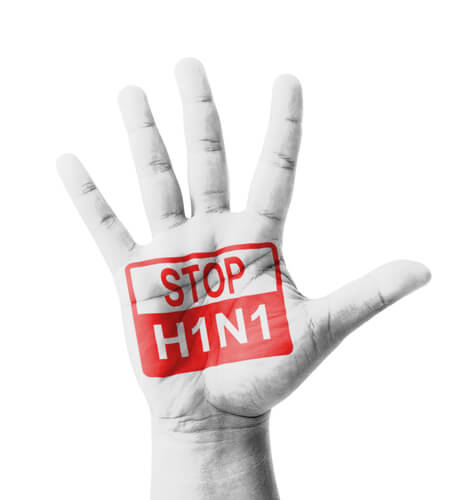Swine Flu: The H1N1 Alert!
Not far before in 2009, it was termed as a pandemic by the World Health Organisation. The H1N1 flu, or the swine flu, is a respiratory disease caused by influenza viruses that affect the respiratory tracts, resulting in coughs, nasal discharge, decreased appetite, etc.
Caused by influenza Virus H1N1, this disease was first recognized in Mexico in 2009. The reason why it came to be also known as the swine flu is because the virus had a close resemblance with influenza viruses that caused illnesses in pigs.
Symptoms of Swine Flu
The symptoms of Swine Flu are usually similar to those of other influenza strains. If a person contracts the H1N1 virus, the symptoms that he/she might exhibit are:
- Sudden fever
- A runny or blocked nose, nasal discharge
- Sore throat and cough
- Body aches, headaches, severe joint & muscle pain
- Extreme fatigue
- Sudden chills
- Nausea
These tell-tale symptoms usually show up one or two days after the person has been exposed to the virus. In some cases, those suffering from the flu develop severe respiratory conditions and need to be provided with respiratory support. In other severe cases, patients also develop pneumonia if the infection continues to persist.
If left undiagnosed or untreated, victims might end up with secondary bacterial infection of the lungs, leading to death.
How Can Swine Flu be diagnosed?
Swine Flu can be diagnosed with a nasopharyngeal swab sample, which detects the presence of the H1N1 virus in the patient. If the test turns out to be positive for TYPE A influenza, then the chances are high that the person is affected by the H1N1 virus.
What should you do if you think you’ve Swine Flu?
A fit and healthy person can normally handle the symptoms of the flu without fear of any further complication, and most people recover within weeks of being down with it. However, if the symptoms show no sign of waning or keep getting worse, it is advisable to contact your doctor immediately. Pregnant women, aged people (over 65 years) and people suffering from a long term medical condition such as diabetes, kidney disease or heart ailments are at a higher risk of developing severe complications.
What is the treatment for H1N1?
An early detection is first step towards timely treatment of the flu. In most cases, the first way of treatment is symptom-relief. There are a few anti-viral drugs which your physician might prescribe n order to reduce the severity of the symptoms. Also, people who are at a higher risk of contracting the disease are advised to take the flu vaccination to stay on the safer side.
What can we do to avoid contracting the virus?
One of the most essential ways to protect yourself and your close ones from catching the virus is by maintaining a good hygiene. Here are a few easy steps that could be incorporated to keep the disease at bay:
- Use tissues to cover your mouth & nose while coughing or sneezing
- Dispose of the tissues soon after use
- Wash your hands thoroughly with soap & water each time you come back from outside
- Be extra careful at public places
Remember, an early diagnosis can not only prevent further complications, but also help you lead a healthy and stress-free life!














